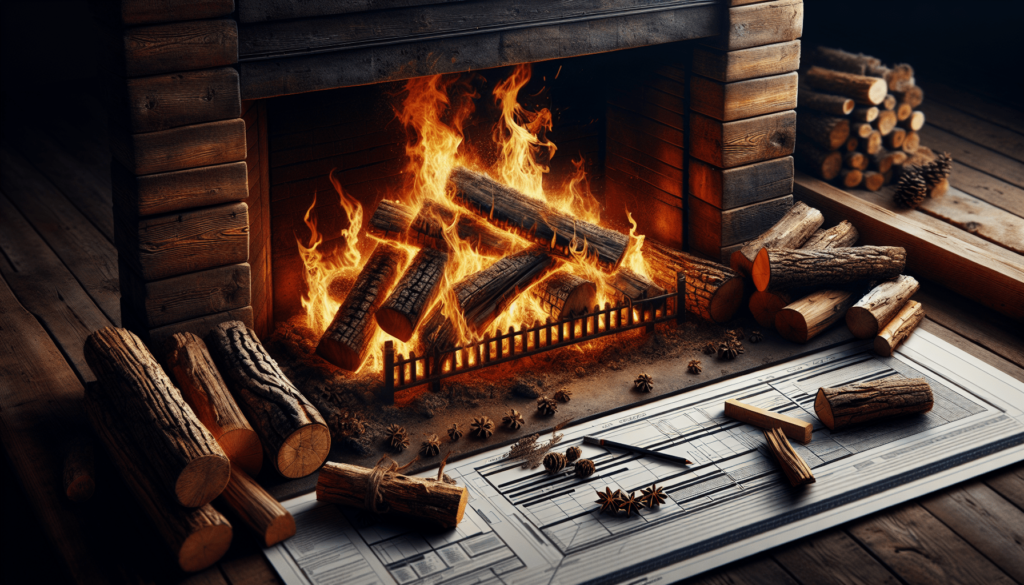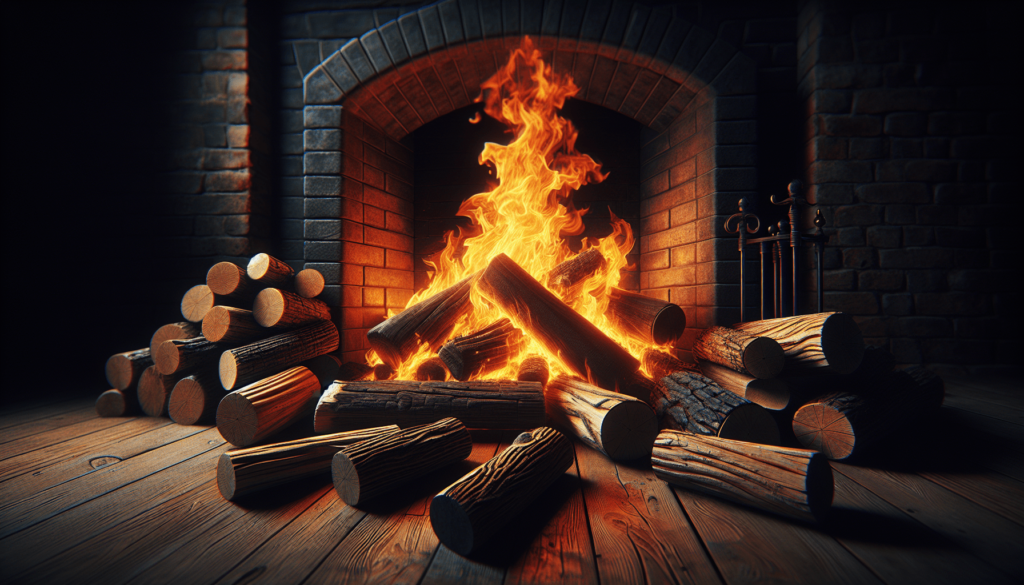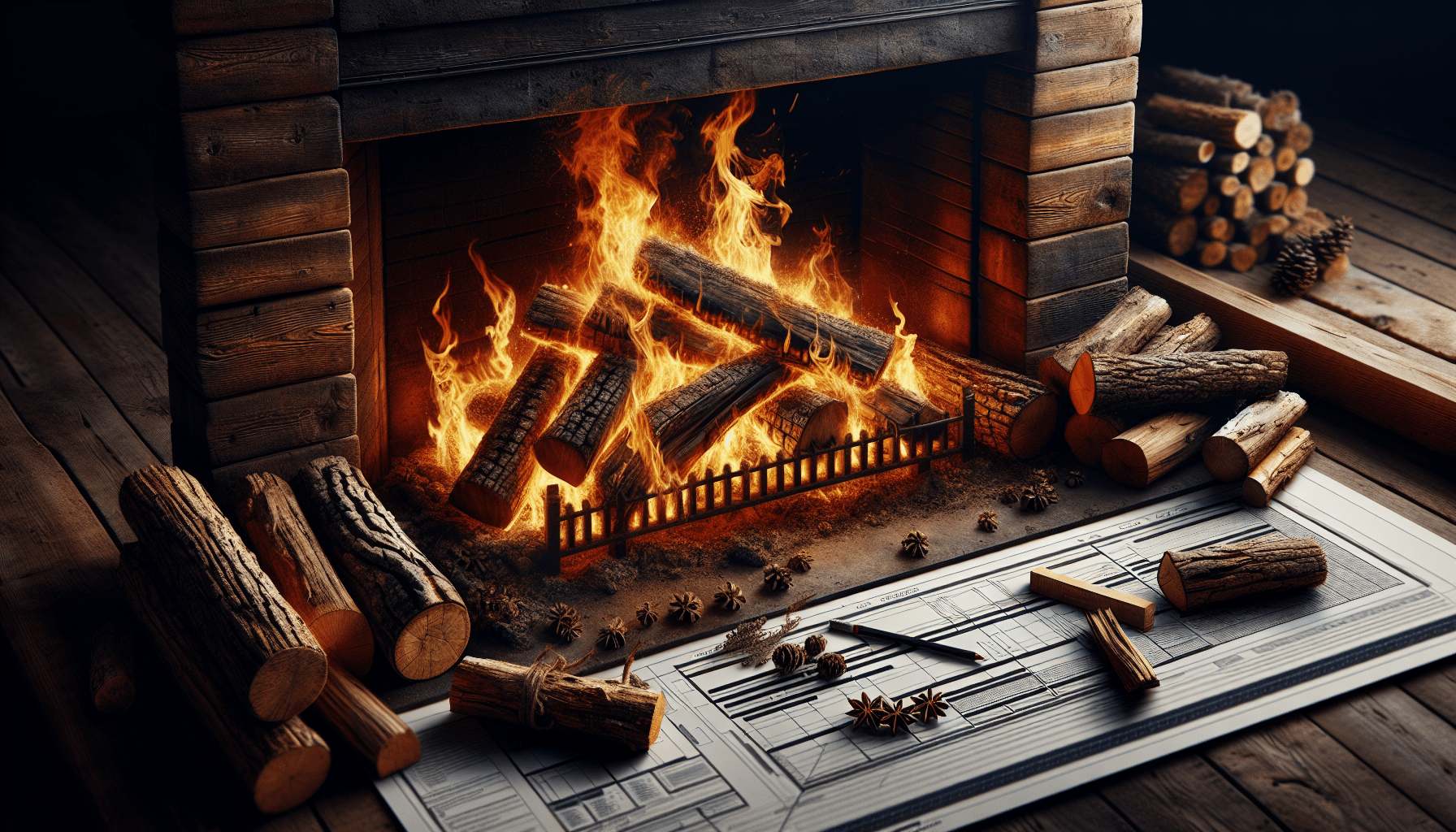When you think about a wood-burning stove or fireplace, it’s easy to get lost in the cozy warmth and pleasant crackling sounds. But have you ever wondered what type of property wood burning actually is? In essence, wood burning is a chemical reaction, specifically a type of combustion. When wood is burned, it undergoes a transformation where its chemical structure reacts with oxygen, releasing heat, light, and various gases like carbon dioxide and water vapor. This process highlights the energy stored within the wood, making it both a fascinating scientific phenomenon and an effective way to heat our homes. Hey there, ever wondered what type of property wood burning is? I mean, really, what’s going on when you light up a fireplace or throw some logs into a stove? The crackling wood, the scent that fills the room, the warmth that spreads—it’s all pretty magical, right? But let’s break it down a bit more and dive into the nitty-gritty of what’s actually happening.

The Basics of Wood Burning
First off, let’s get a basic understanding of what wood burning entails. Wood burning is, at its core, a chemical reaction. When you set that puppy on fire, you’re triggering a series of events that transform the wood from a solid state into gases, liquids, and ash.
Combustion Process
Alright, here comes the science bit. Buckle up. Wood burning undergoes a process known as combustion. This involves the rapid oxidation of the wood, which produces heat and light. If that sounds like too much to digest over a cup of coffee, think of it this way: the wood is reacting with oxygen to create a burst of energy.
Chemical Reactions
So, what kind of chemical reactions are we talking about? Well, when wood burns, several things happen simultaneously:
- Dehydration: Water inside the wood evaporates.
- Pyrolysis: The wood’s organic materials break down into simpler molecules.
- Oxidation: These molecules then react with oxygen to produce heat, light, and combustion by-products, primarily carbon dioxide and water vapor.
Phases of Wood Burning
You’ve probably noticed that wood doesn’t burn uniformly. Different parts of the log might be in different stages of the burning process at any given time. These stages include:
- Ignition Phase: The heat source gets the wood to a temperature where gases are released.
- Flaming Phase: The gases burn with a visible flame.
- Charcoal Phase: What remains is primarily charcoal, which burns more slowly and steadily.
Types of Wood: Hardwoods vs. Softwoods
Ah, the age-old debate: hardwoods or softwoods? Maybe you’ve heard people wax poetic about how hardwoods like oak and hickory burn longer and hotter compared to softwoods like pine and spruce. But what’s behind this preference?
Hardwoods
Hardwoods come from deciduous trees like oak, hickory, and maple. These trees lose their leaves every year, which is an easy way to identify them if you’re out and about. Hardwoods generally have a higher density, meaning they pack more material into a small space. This density leads to a few unique properties when they’re burned:
- Longer Burning Time: Because of their density, hardwoods burn for a longer period.
- More Heat Output: More mass means more energy, which translates into more heat.
- Less Smoke: Hardwoods tend to produce less smoke, making them ideal for indoor fireplaces.
Softwoods
On the other hand, softwoods come from coniferous trees like pine, cedar, and spruce. These trees keep their needles year-round, so they’re easier to spot. Softwoods are less dense, burning more quickly and with a hotter initial flame compared to hardwoods. Here’s what you can expect when burning softwoods:
- Easier Ignition: Softwoods catch fire more easily, making them excellent for kindling.
- Quick Heat: They burn hot but fast, which is great for a quick warm-up but not for a long-lasting fire.
- More Smoke: They tend to produce more smoke and creosote, which can build up in chimneys and require more frequent cleaning.
Environmental Impact of Wood Burning
Okay, let’s not kid ourselves: wood burning isn’t all cozy winter evenings and romantic ambiance. It has some real environmental implications that we need to consider.
Air Quality
Burning wood releases a variety of pollutants, including fine particulate matter (PM2.5), carbon monoxide, and volatile organic compounds (VOCs). These can contribute to:
- Respiratory Issues: Fine particulates can penetrate deep into the lungs, exacerbating conditions like asthma and bronchitis.
- Air Pollution: Wood smoke can elevate air pollution levels, particularly in areas where wood burning is common.
Carbon Footprint
Here’s a real kicker: while wood is considered a renewable resource, it’s not entirely carbon-neutral. Harvesting, processing, and transporting firewood all generate carbon emissions. However, wood burning is generally considered to have a lower carbon footprint compared to fossil fuels like coal and natural gas.
Sustainable Practices
If you’re environmentally conscious (and who isn’t these days?), you might want to think about sustainable wood burning practices. This includes:
- Sourcing Locally: Reduce the carbon footprint associated with transportation.
- Seasoning Wood: Use well-seasoned, dry wood to decrease the amount of smoke and increase efficiency.
- High-Efficiency Stoves: Consider using high-efficiency wood stoves that burn cleaner and make the most of your firewood.
Practical Tips for Efficient Wood Burning
Alright, so you’ve got your firewood and you’re ready to roll. But wait—there’s a method to the madness of building an efficient fire.
The Right Wood
First and foremost, you want to make sure you’re using the right wood for your needs. Seasoned hardwoods like oak, hickory, or maple are generally best for long-lasting fires. But if you need kindling, softwoods are your go-to due to their ease of ignition.
Stacking Wood
The way you stack your wood can make a big difference. Here are some common methods:
| Method | Description |
|---|---|
| Log Cabin | Logs are stacked in a crisscross pattern, allowing good air circulation. |
| Teepee | Logs are stacked in a cone shape, promoting quicker ignition. |
| Lean-To | A simple starting method, with small sticks leaning against a bigger log. |
Getting the Fire Started
When it comes to igniting your chosen stack, a fire starter or tinder and kindling are essential. Fire starters can be anything from commercial firelighters to something homemade like dryer lint or pine cones dipped in wax.
Maintaining the Fire
Once your fire is up and running, you’ll need to keep it going. It’s usually not a set-it-and-forget-it situation, unless you’ve hit the jackpot with the perfect log. Keep an eye on it and add logs as needed. If the room starts to fill with smoke, it might be time to adjust the damper or air intake.

Legal and Safety Considerations
Yes, it’s not all just fun and flames; there are legal and safety angles to think about, too. Especially if you’re in an urban area where wood burning might be regulated.
Local Regulations
Different regions have different rules about wood burning. Some urban areas with poor air quality might have “no burn” days or times when burning wood isn’t allowed. It’s a good idea to check with your local environmental or air quality board to see what’s permissible in your neck of the woods.
Safety Precautions
Safety first, folks. Here are a few must-dos to keep things secure:
- Install Smoke and CO Detectors: At minimum, you should have functioning smoke and carbon monoxide detectors near your wood-burning appliances.
- Chimney Maintenance: Regularly clean your chimney to prevent creosote buildup, which can cause dangerous fires.
- Keep Flammable Materials Away: Ensure that rugs, drapes, and other flammable items are at a safe distance.
Health Implications
Hate to be the bearer of bad news, but wood smoke isn’t exactly a health elixir. In fact, it can have some pretty nasty side effects if you’re not careful.
Respiratory Issues
Prolonged exposure to wood smoke can aggravate existing respiratory conditions and even bring on new problems. This is especially concerning for children, the elderly, and anyone with lung issues.
Allergic Reactions
Some people are allergic to the components of wood smoke, experiencing symptoms like runny noses, itchy eyes, and skin rashes. If you or anyone in your household falls into this category, it might be worth reconsidering the wood-burning lifestyle.
Alternatives to Wood Burning
Let’s face it: wood burning isn’t for everyone. If the environmental impact, safety concerns, or health implications have you feeling uneasy, there are other ways to bring warmth and ambiance into your life.
Gas Fireplaces
If convenience is your middle name, then a gas fireplace might be up your alley. They’re easy to switch on and off, don’t produce smoke, and still give you that warm glow. The downside? Well, you are still using a fossil fuel, so there’s that to consider.
Electric Fireplaces
An electric fireplace offers even greater convenience than gas. Flip a switch, and voilà! Immediate ambiance without any of the cleanup. Plus, there are models that are surprisingly realistic.
Pellet Stoves
Pellet stoves use compressed sawdust pellets that burn cleaner than traditional firewood. They’re a more eco-friendly option, but they do require electricity to operate.
Conclusion
So, what type of property is wood burning? It’s a chemical transformation with a sprinkle of practicality, a dash of environmental impact, and a handful of safety considerations. It’s a multifaceted process that serves various needs—be it heating your home, creating a cozy atmosphere, or just satisfying your inner pyromaniac.
Ultimately, the best way to approach wood burning is to arm yourself with knowledge and make informed choices. Whether that means opting for sustainable practices or exploring alternative heating options, the decision is yours. And, who knows, maybe next time you light up that fireplace, you’ll appreciate the crackling logs and the dancing flames that much more. Thanks for sticking with me on this fiery journey—stay warm out there!
If you made it to the end, kudos! That was quite a romp through the world of wood burning. Got any questions or thoughts on the topic? Feel free to share. Let’s keep the conversation going!

